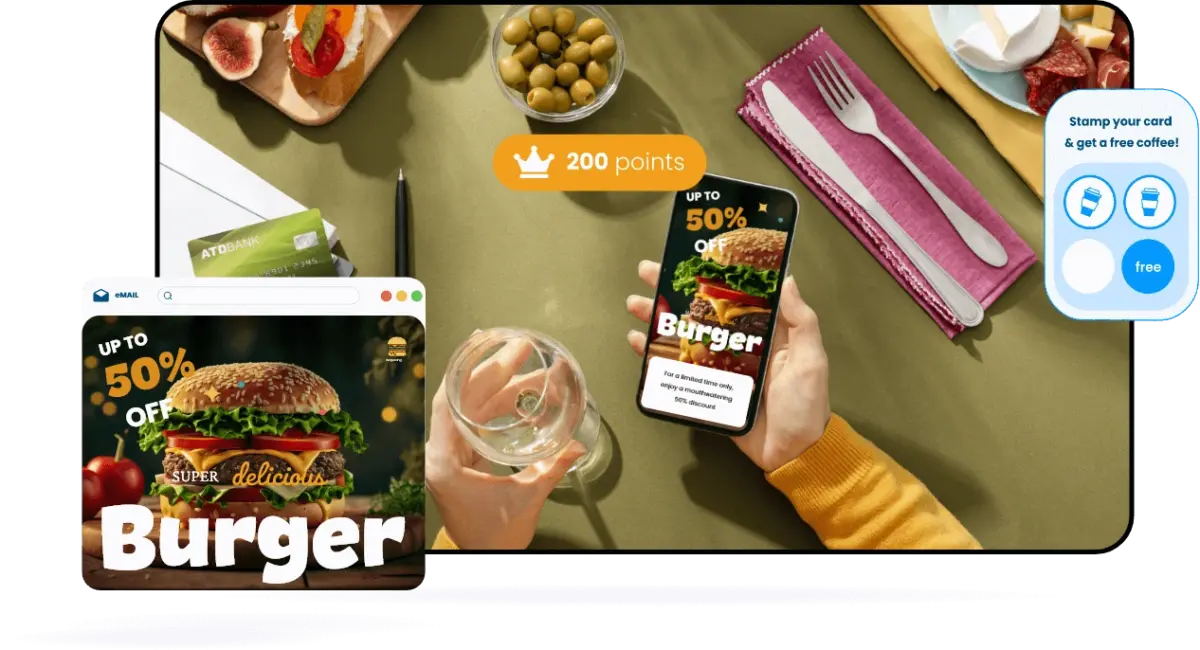All Articles
Comprehensive Guide to Restaurant Email Marketing
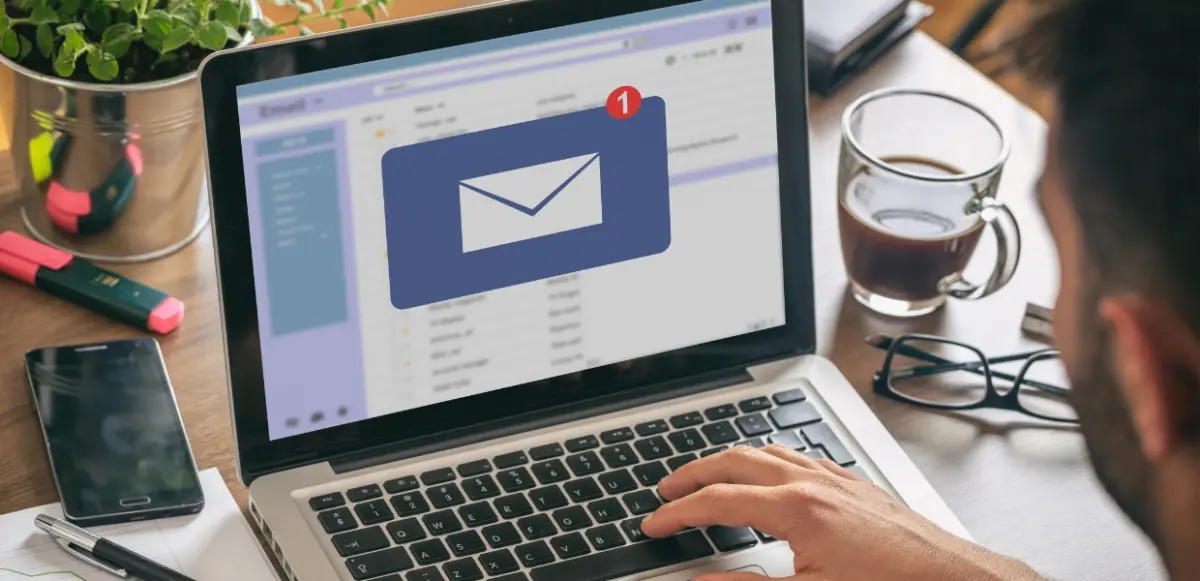
Staying connected with customers is essential for sustained success. With more dining options than ever, consumers are increasingly selective about where to spend their time and money. For this reason, building a relationship with your customers and going beyond great food and excellent service is essential. When they feel connected with your restaurant and feel like your restaurant is “their restaurant,” customers are more eager to come. Communication is key to building a long-lasting relationship; this is where restaurant email marketing becomes essential.
Email marketing is one of the most powerful and cost-effective restaurant marketing tools available to restaurant owners and marketers. It enables direct, personalized communication with guests, helping restaurants foster stronger connections, boost engagement, and remain top-of-mind even when customers aren’t actively dining out. Email campaigns can be strategically used to drive repeat business and grow revenue, from promoting special offers to sharing new menu items or celebrating customer milestones.
Moreover, email marketing is highly measurable, allowing restaurants to track open rates, click-through rates, and conversions in real-time. This data-driven approach enables businesses to refine their messaging, improve customer experiences, and make more informed marketing decisions. Ultimately, restaurant email marketing helps businesses stand out in a crowded marketplace and plays a key role in building loyalty and maximizing long-term profitability.
What is Restaurant Email Marketing?
Restaurant email marketing is a digital marketing strategy that involves sending targeted emails to current and potential customers to boost customer engagement, drive reservations, increase sales, and build lasting relationships. Unlike traditional advertising, email marketing allows restaurants to directly reach customers in a personal, cost-effective, and highly measurable way.
Is Restaurant Email Marketing Effective?
The answer is: Absolutely yes! Restaurant email marketing is proven to deliver one of the highest returns on investment (ROI) compared to other marketing channels. According to Litmus, email marketing generates an impressive $36 return for every $1 spent. Additional statistics further highlight its effectiveness:
- 46% of customers aged 40 to 54 still prefer email communication to stay informed about restaurant updates, while 41% of those aged 19 to 29 share the same preference. These numbers emphasize that email remains a relevant and powerful tool across different age demographics. (Source)
- Emails sent by restaurants have an open rate of 36.96% (Source)
- 66% of consumers say they have made a restaurant purchase influenced directly by an email they received (Source).
Best Practices for Restaurant Email Marketing
To ensure maximum effectiveness, follow these best practices for restaurant email marketing. These aren’t just checkboxes—they’re dynamic strategies that, when done right, breathe life into your campaigns and forge stronger, more personal relationships with your guests.
- Build and Segment Your Email List
Think of your email list as a dining room full of diverse guests—each with their own tastes, habits, and expectations. Would you serve a steak lover the vegan special? Probably not. That’s why segmentation is key. By dividing your audience into thoughtful groups, you can send emails that feel like they were written just for them.
Consider grouping your list based on the following:
- Dining frequency – regulars might love loyalty rewards, while one-time visitors could use a special offer to return.
- Cuisine preferences – keep vegetarians informed about new plant-based dishes while meat lovers hear about the ribs.
- Geography – send local event invites only to nearby subscribers.
- Special dates – birthdays, anniversaries, or even the date they first dined with you.
A well-segmented list means you’re not just shouting into the void—you’re starting a conversation with people who want to hear from you.
Once you’ve built your customer database, TapTasty will make it easy to segment your audience based on order value and frequency. With its integrated email marketing feature, you can target specific customer groups using filters such as age, gender, location of orders, and more.
By integrating a tool like TapTasty, building and segmenting your email list becomes seamless, efficient, and highly effective—transforming customer data into powerful, personalized marketing opportunities.
- Personalize Your Emails
No one likes feeling like just another email address on a list. Personalization brings a human touch to your marketing—like your server remembering a guest’s favorite wine. It tells customers, “We see you.”
Simple personalization goes a long way:
- Use their first name (not just in the greeting, but in subject lines, too!)
- Reference previous orders: “Craving that truffle risotto again?”
- Suggest menu items based on dietary preferences or habits
- Send an email after a visit with a warm thank-you or an incentive to come back
The beauty of email personalization is that it creates emotional resonance. And in hospitality, emotions matter. Personalized emails aren’t just opened—they’re remembered.
- Design Mobile-Friendly Emails
Let’s face it: most people check their email while on the go—standing in line, commuting, or scrolling before bed. If your email doesn’t look good on a phone, it may not get read at all.
To make sure your message looks as good as your food:
- Stick to a single-column layout
- Use large, legible fonts
- Add tappable buttons for links and CTAs
- Compress images to load fast—even on slower connections
- Keep the most important info above the fold
Before hitting send, test your email across different devices. An email that’s mobile-optimized respects your audience’s time and attention—and that respect turns into trust.
- Use Compelling Subject Lines
Think of the subject line as your front-of-house greeter—it sets the tone and either invites people in or turns them away. If your subject line is dull, vague, or too pushy, your email could land in the trash—or worse, spam.
Make your subject lines:
- Concise (aim for 5–8 words)
- Emotionally engaging (spark curiosity, humor, or urgency)
- Personal (use names, preferences, or timely offers)
- Clear about what’s inside
Examples:
- “Anna, You’ve Earned a Dessert On Us 🍰”
- “This Weekend Only: Half-Off Appetizers!”
- “Don’t Miss Our Secret Menu Drop 👀”
Subject lines are small but mighty—test different styles and track what works. The difference between a 15% and 30% open rate could come down to just one word.
- Include Clear Call-to-Action (CTA)
You’ve grabbed attention and delivered value—but now what? Without a clear CTA, even the best-crafted email is a dead end. Tell people exactly what you want them to do—and make it easy.
Whether it’s booking a table through your reservation system, ordering online, or checking out your new seasonal menu, your CTA should be:
- Bold and obvious—use buttons or bold text
- Action-oriented—verbs like “Reserve Now,” “Order Today,” or “Claim Your Deal”
- Repeated—once at the top, once at the bottom
Bonus: CTAs don’t always have to be salesy. Try softer CTAs like “Take a Peek” or “Discover the Dish Everyone’s Talking About.” These draw people in without pressure.
By implementing these best practices—not as a checklist but as a creative, evolving strategy—you’ll turn your emails into more than just messages. They’ll become experiences, stories, and invitations that keep your guests returning for more. That not only capture attention but also drive actual business results. These techniques provide the framework for email marketing success, from growing your customer base to boosting loyalty.
Restaurant Email Marketing Examples
Now that we’ve covered the best practices, let’s bring those strategies to life. Below are five excellent examples of restaurant email campaigns that engage and convert. And the best part? With TapTasty’s built-in email builder, creating these emails is a breeze. The intuitive drag-and-drop editor allows restaurants to design beautiful, effective messages without a graphic designer or developer.
- Welcome Emails
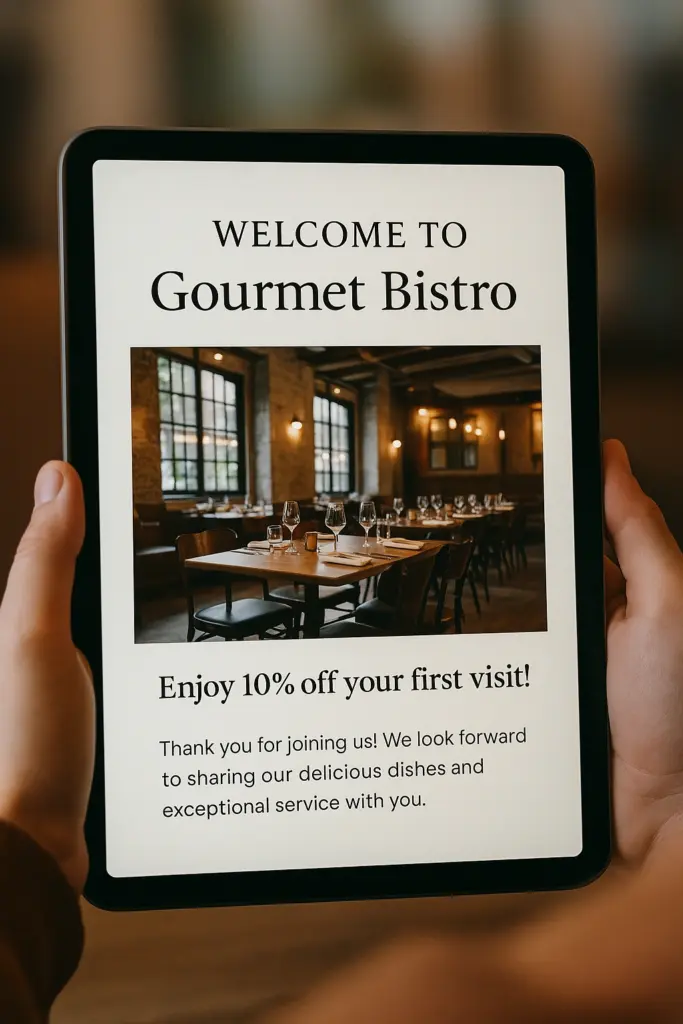
A compelling welcome email sets the tone for your relationship with new subscribers. With the platform’s email builder, you can quickly design a warm, branded message that greets new customers, introduces them to your restaurant’s vibe, and delivers a tempting incentive for their first order or reservation.
Image Suggestion: An inviting photo of your restaurant interior with a cheerful greeting.
Example: “Welcome to Gourmet Bistro! Enjoy 10% off your first visit!”
Bonus tip: Automate welcome emails to send the moment someone signs up through your ordering platform or loyalty program.
- Promotional Emails
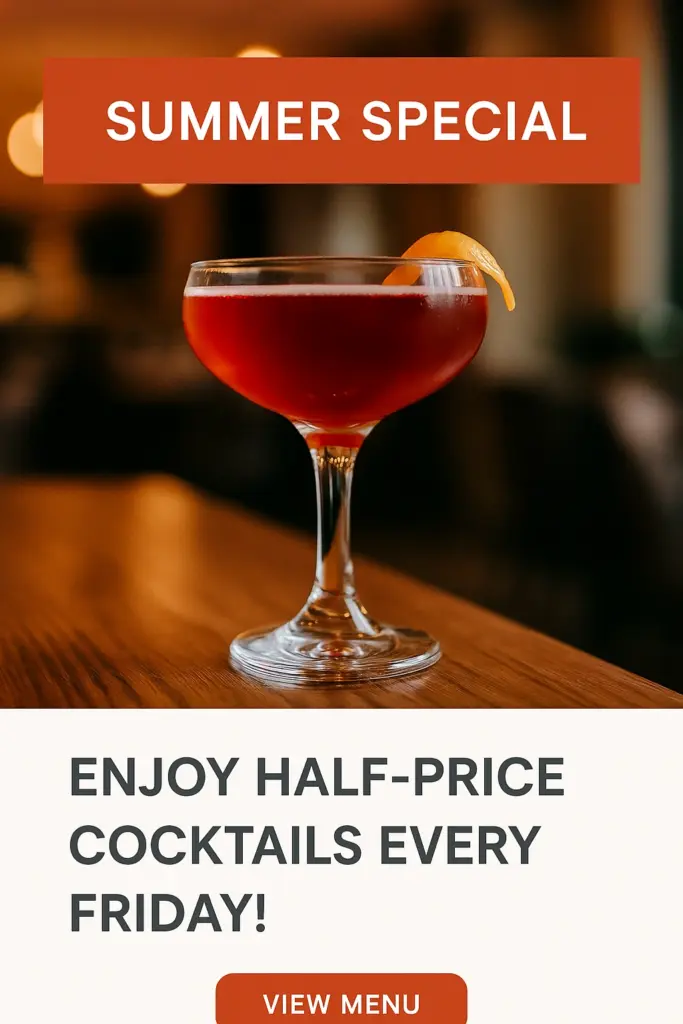
Running a special? Want to boost traffic on slow nights? Promotional emails are the perfect tool. You can build visually striking messages using product images, countdown timers, and bold call-to-action buttons that drive clicks and conversions.
You can also create and manage exclusive coupons and discount codes directly through TapTasty. This means you can generate unique offers for different customer segments, set expiration dates, and track performance over time—all from one platform.
Image Suggestion: A visually appealing photo of your promotional dish or event.
Example: “Summer Special: Enjoy Half-Price Cocktails Every Friday!”
You can even schedule these in advance or set them to trigger based on customer behavior.
- Birthday Emails
Everyone loves to feel special on their birthday. Birthday emails are a thoughtful way to show appreciation and build loyalty. Whether it’s a heartfelt greeting or a tempting freebie, these messages can brighten someone’s day—and bring them back through your doors.
This small gesture goes a long way in making your customers feel seen, valued, and connected to your brand.
Image Suggestion: A festive birthday-themed image, including a cake or celebratory visuals.
Example: “Happy Birthday, John! Celebrate with a complimentary dessert!”.
- Event Invitations
Hosting a live jazz night, chef’s tasting, or holiday brunch? Event invitation emails help you build anticipation and ensure guests don’t miss out.
Image Suggestion: Event-themed visuals featuring food, beverages, or performers.
Example: “You’re Invited: Exclusive Wine Tasting Event This Saturday!”
- Newsletter Emails
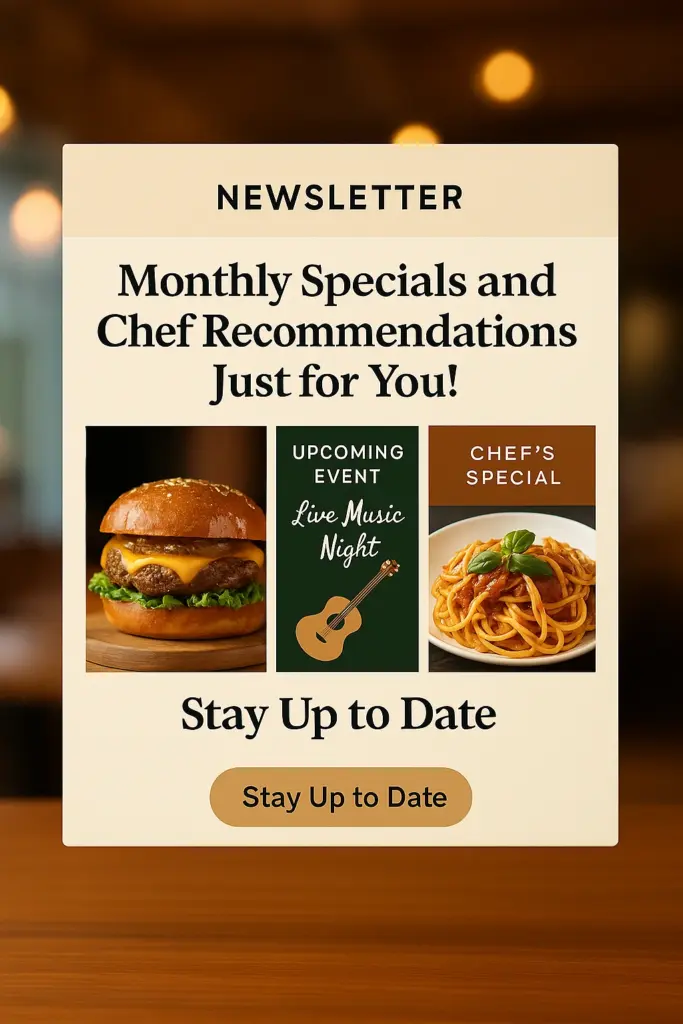
Newsletters keep your restaurant top-of-mind and give you a platform to showcase what’s new, exciting, and delicious. With the platform’s email builder, you can create stylish newsletters filled with chef spotlights, seasonal menu launches, and behind-the-scenes content that brings your brand to life.
Image Suggestion: A collage showcasing new dishes, upcoming events, or chef’s specials.
Example: “Monthly Specials and Chef Recommendations Just for You!”
Add value with insider updates, and use TapTasty’s scheduling tools to deliver these newsletters at the perfect time—whether it’s every week or once a month.
Conclusion
Restaurant email marketing remains one of the most effective and affordable marketing channels. Its power lies not just in reaching customers but in building authentic, lasting relationships. From a warm welcome email to a timely promotional offer or a heartfelt birthday greeting, each message you send is an opportunity to make someone feel connected to your brand.
When done right, email marketing becomes more than a communication tool—it becomes a dynamic extension of your restaurant’s personality. It allows you to showcase your unique voice, highlight your menu, share your story, and engage guests with offers and updates that truly resonate. Combined with personalization and thoughtful segmentation, these emails can dramatically improve guest retention, satisfaction, and even word-of-mouth referrals.
Technology like TapTasty can help simplify and automate much of this process, but the core of every successful email campaign remains the same: understanding your audience and speaking to them like valued guests, not just inbox occupants.
So whether you’re just getting started or refining an existing strategy, embrace these best practices, stay creative, and remain consistent. With the right approach, restaurant email marketing has the potential to not only fill tables—but build community and fuel long-term growth.
 3 April 2025
3 April 2025 7 min read
7 min read



